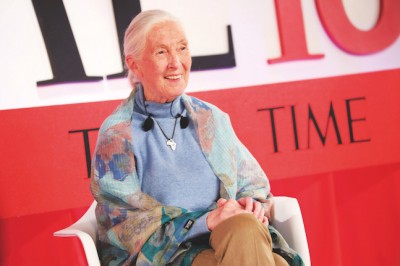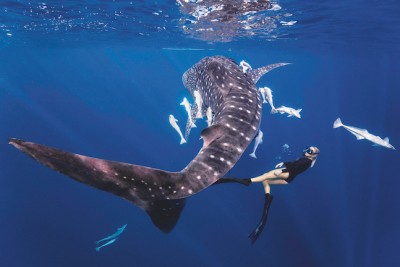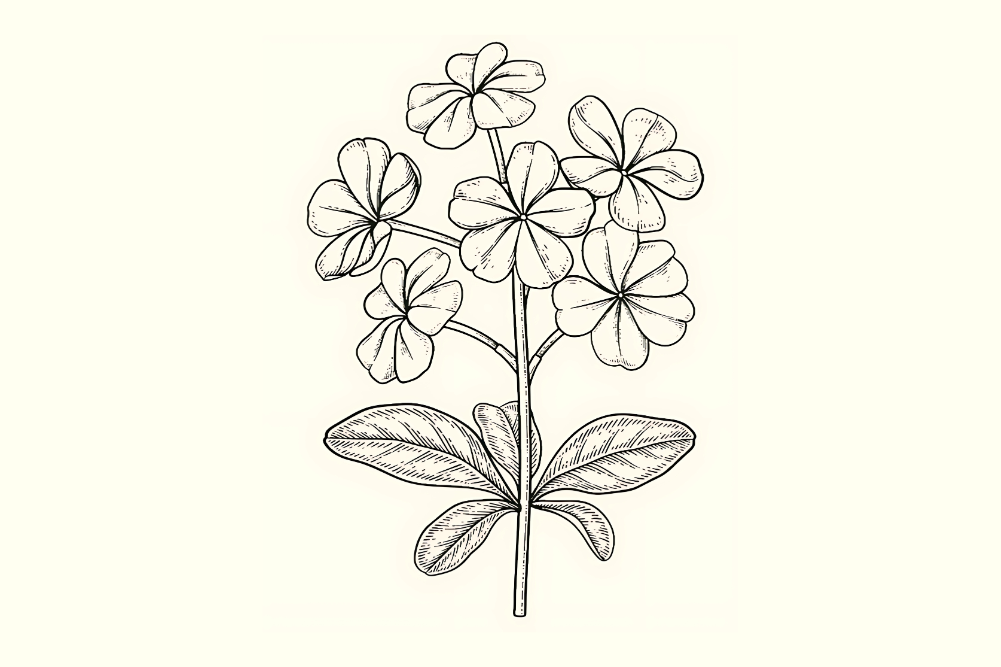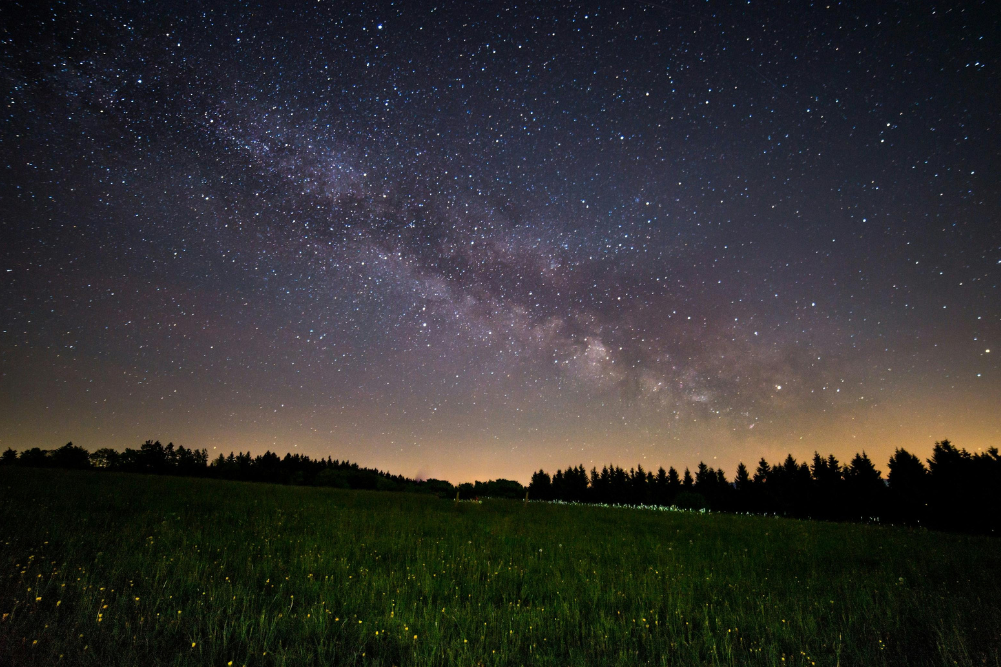WellBeing’s 6 favourite climate revivalists
In WellBeing we no longer talk about “climate change” because that is the language of persuasion and we are past that point. The climate crisis is real and we now talk about climate revival, the positive philosophies and actions that will help us all save the future. In keeping with that positive direction here we celebrate six of our favourite climate revivalists. These are not the only people we could have included here, they are not better than others, and the list is not exhaustive. These people are however undeniably worth acknowledging for their vision, their dedication and their skill. So please join with us in a celebration of some amazing people.
David Attenborough
Sir David Frederick Attenborough is one of Britain’s most beloved figures; a broadcaster, natural historian and, at 93, a global superstar, his reign in the public eye has been defined by environmental benevolence.

Attenborough’s epic series about the natural world have been broadcast around the globe, making a name for him as the father of our planet. Travelling from the icy Edens of Antarctica to the momentous plains of Africa’s Serengeti, his documentaries established a new genre of wildlife film. It is now almost impossible to imagine a time when Attenborough wasn’t on our screens, narrating — in his signature comforting drawl — the epic fight between bison or the silent stalk of Africa’s biggest cats. At its finest, his storytelling reimagines the affairs of the natural world into awe-inspiring tales that have captured the imagination of the globe. The migration patterns of albatross and the reign of a queen ant in her colony are crafted into stories that sparkle and delight in a way only Attenborough has mastered.
It is now almost impossible to imagine a time when Attenborough wasn’t on our screens, narrating — in his signature comforting drawl — the epic fight between bison or the silent stalk of Africa’s biggest cats.
Over the last 15 years, Attenborough’s stories have shifted from a natural history perspective to an environmental one. Initially peppered with conservation issues, they are now a rallying cry for a planet cracking under the weight of human impact. The arrival of Blue Planet II in 2017 ushered in a new urgency to Attenborough’s blockbuster epics and transformed popular attitudes towards single-use plastic and pollution. He is, on all accounts, credited with making the plastic straw the single most unfashionable accessory in the UK.
In his most recent films, no stunning sequence of animals is without Attenborough narrating the precariousness of their continued existence. Images of turtles tangled in plastic and polar bears stranded on a lone piece of ice explicitly tackle environmental harm caused by humans.
Aside from over seven decades in television, Attenborough has devoted much of his time to campaigning for radical action to tackle biodiversity loss and the climate crisis. He addressed leaders from almost 200 countries at the UN climate change summit in 2018 and last year, speaking at the World Economic Forum in Davos, Switzerland, he warned that “the Garden of Eden is no more” as he urged political and business leaders to tackle climate change before it is too late. “Growth is going to come to an end, either suddenly or in a controlled way,” he explained; only “a madman or an economist” would cling to the notion of infinite economic growth.
Greta Thunberg

Swedish climate youth activist Greta Thunberg certainly deserves a place as one of WellBeing’s favourite climate revivalists. After gaining worldwide recognition for her efforts to fight climate change, she has inspired a movement of school-age activists all over the world. At just 17 years of age, Thunberg is our youngest climate revivalist.
The wide-eyed, pigtailed teenager is celebrated across the world as a model of determination and positive action.
In 2018, at age 15, Thunberg skipped school and sat on the cold cobblestone pavement outside the Swedish parliament to protest climate change. Holding a hand-painted banner that said “skolstrejk för klimatet” (school strike for climate) she sat from 8.30am to 3pm — a regular school day — and bravely met the eyes of bemused onlookers and classmates with passion and urgency. On that first day, she sat alone. The next day, however, people started to join her strike. Today, Thunberg is a household name and it’s safe to say she’s anything but alone.
That first brave act inadvertently kicked off a global movement known as Fridays for Future or School Strike for Climate and quickly spread all over the world. Now, over 100,000 school children strike for the climate. Described as “the Greta effect” and said to be one of the biggest environmental protests the world has ever seen, Thunberg has inspired schoolkids to strike in Japan, Canada, Australia, Iceland, USA, Germany, UK, India, France, Italy, Finland, Pakistan, Uganda, Russia, Argentina and many other countries.
The wide-eyed, pigtailed teenager is celebrated across the world as a model of determination and positive action. No longer are children staying quiet; Thunberg has given kids a platform to speak up. This has sparked new ideas and initiatives that see children presenting business pitches to schools on how to be greener, while pupils are begging their parents to stop engines running outside the school gates. Plastic bottles and straws are a thing of the past at some schools after student-led campaigns for the environment.
But “the Greta effect” doesn’t just stop in schools. She has been invited to speak all over the world. Her powerful address at the 2018 United Nations Climate Action Summit has been watched by millions online. In it, Thunberg criticises world leaders for their failure to take sufficient action to address the climate crisis: “You are failing us. But the young people are starting to understand your betrayal. The eyes of all future generations are upon you. And if you choose to fail us, I say: We will never forgive you.”
Known for her straightforward speaking manner, both in public and to political leaders, she was included in Forbes 2019 list of The World’s 100 Most Powerful Women, TIME magazine named her Person of the Year and she has received two consecutive nominations for the Nobel Peace Prize (2019 and 2020).
Not even the COVID-19 outbreak is stopping Thunberg. Although she intended to strike outside parliament every Friday until the Swedish government’s policies are in line with the Paris climate agreement, she is now taking action online and holding digital strikes. Thunberg, who tries her best to live a low-carbon life by following a vegan diet and refusing to fly, is the leader kids (and adults) need right now. By encouraging children to speak up and ask questions, she has inspired a movement that is not only unifying humanity but making a real difference.
Thunberg, along with her supporters, has fought hard to create the urgency and action we need in our fight for the climate. It is for these reasons that Thunberg is our youngest climate revivalist.
Jane Goodall

In July 1960, at the age of 26, Englishwoman Jane Goodall travelled to the shores of Lake Tanganyika, in what is today Tanzania, and bravely entered the little-known world of wild chimpanzees. She opened a window into their lives for the entire world. Today, Goodall’s work revolves around inspiring action on behalf of endangered species, particularly chimpanzees, and encouraging people to do their part to make the world a better place for people, animals and the environment we all share.
[Dr Goodall believes in] the interconnectedness of all living things and that there is collective power that arises from individual action.
In 1957, at the age of 23, a young Englishwoman named Jane Goodall was invited by a school friend to visit her parents’ farm in Kenya. Ever the adventurer, and fascinated by animals since a child, Goodall accepted the invitation. Within a few months she had been introduced to the noted anthropologist and palaeontologist Dr Louis Leakey (who made revolutionary discoveries regarding human evolution during his digs at Olduvai Gorge). Leakey needed someone to begin a study into the behaviour of chimpanzees with a view to shedding light on human evolution. Goodall did not have a university degree but Leakey noticed her relentless enthusiasm for understanding animal behaviour, and so began a path for Goodall that has reverberated through the following seven decades.
In 1958 Leakey sent Goodall back to London to study primate behaviour and anatomy with leading people in the field. Then in 1960, Goodall returned to Africa, to Gombe Stream chimpanzee reserve, to study chimpanzees in the wild.
Goodall took a groundbreaking approach, immersing herself in the chimpanzee habitat and experiencing their society as a neighbour rather than a distant observer. She defied scientific convention by giving them names instead of numbers, but in the process she understood them not only as a species but also as complex individuals.
A pivotal moment came in the autumn of 1960 when she saw one individual strip leaves from a twig to make a tool for fishing termites from a nest. Until this revolutionary moment, the prevailing scientific belief was that humans were the only species to make and use tools. Goodall’s discovery led Leakey to say, “Now we must redefine man, redefine tool, or accept chimpanzees as humans!”
In 1961 Goodall did something very few people have done: she was accepted by Cambridge University as a PhD candidate without a prior degree. She gained her PhD in ethology in 1966. More important than her natural affinity with her subject though, was Goodall’s ability to engage a global audience. Her books In the Shadow of Man and Through a Window were integral to her raising public awareness and saving chimpanzees from extinction.
In 1977 she established the Jane Goodall Institute (JGI) to perpetuate her work in community-centred conservation programs in Africa. These programs are aimed at improving the lives of people, animals and the environment. The JGI youth program Roots & Shoots equips young people in more than 100 countries to act as informed conservation leaders.
In the late 1980s Dr Goodall realised that her work, and the planet, required her to leave her studies in Gombe. She has spent the last decades travelling, around 300 days per year, visiting schools and speaking to packed auditoriums with her message of hope, the interconnectedness of all living things and that there is collective power that arises from individual action. In 2002 she was named a United Nations Messenger of Peace.
Goodall’s innate drive to understand animal behaviour from the animal’s point of view, and the conservation activities that arise from this understanding, make her one of our first and favourite climate revivalists.
Leonardo DiCaprio

Uniquely placed as a household name, DiCaprio has leveraged his A-lister influence to raise awareness for climate change and sensitise a global audience to change their behaviour.
Actor, philanthropist and environmentalist Leonardo DiCaprio founded his environmental organisation, the Leonardo DiCaprio Foundation (LDF), in 1998, just one year after he starred as Jack Dawson in the blockbuster movie Titanic. The then 23-year-old star set out to address some of the globe’s most pressing climate concerns, including ocean preservation, wildlife conservation and global warming, and has since funded more than 200 projects and initiatives dedicated to securing a sustainable future, awarding over $100 million in grants across 50 countries.
LDF works both at a grassroots level, partnering with localised projects, and at a global level, working with international organisations including the World Wildlife Fund, Oceana and the WILD Foundation.
Uniquely placed as a household name, DiCaprio has leveraged his A-lister influence to raise awareness for climate change and sensitise a global audience to change their behaviour. The actor has conceded that his celebrity status is a somewhat double-edged sword, affording him the spotlight while allowing naysayers to suggest he is simply a superficial movie star riding the climate change trend wave.
After years of “near misses” at the Oscars, DiCaprio dedicated his 2016 acceptance speech, which he won for his portrayal of Hugh Glass in The Revenant, to the urgency of the climate crisis. “Climate change is real, it is happening right now. It is the most urgent threat facing our entire species, and we need to work collectively together and stop procrastinating,” he said.
“We need to support leaders around the world who do not speak for the big polluters, but who speak for all of humanity, for the indigenous people of the world, for the billions and billions of underprivileged people out there who would be most affected by this. For our children’s children, and for those people out there whose voices have been drowned out by the politics of greed.”
The actor has become a fixture at events focused on global challenges since 2014, when he raised his voice about the urgency of climate change at the United Nations Climate Summit as a UN Messenger of Peace. The speech garnered a record-breaking 1.6 million views on the United Nations channel and was broadcast around the globe. The star was in attendance at the Paris climate negotiations in December 2015 and dropped into the Davos economic forum to pick up an award in 2016 for the work of his eponymous foundation.
In addition, DiCaprio sits on the boards of multiple organisations dedicated to climate issues, and last year co-founded Earth Alliance alongside businesswoman and philanthropist Laurene Powell Jobs and investor and philanthropist Brian Sheth. The organisation is dedicated to combating biodiversity loss, and just one month after forming pulled together an emergency fund of US$5 million to help protect the Amazon against the fires that raged there last year.
Through his foundation, DiCaprio has produced a number of documentaries that sound the alarm for a fraying planet. His latest documentary, Ice on Fire, was released on HBO last year and is resoundingly hopeful in its shift from the urgency of the data to fully operative climate change solutions, including engineers working on carbon sequestration and global wind power. The documentary follows a number of DiCaprio-produced films, namely Cowspiracy, Before the Flood, A Plastic Ocean, Virunga and his marine conservation documentary, Sea of Shadows, which won the Sundance Audience Award last year.
Al Gore

Former US Vice President Al Gore pressed his climate credentials indelibly into the public mind with the 2006 documentary An Inconvenient Truth, but Gore’s actions on climate predate this Oscar-winning effort and continue to this day.
Former Vice President Al Gore was first elected to the United States House of Representatives in 1976. He continued to be re-elected to the House until he was elected to the US Senate in 1984 and then again in 1990. In 1993 Gore was inaugurated as the 45th Vice President of the United States and served for eight years with President Bill Clinton. It was the Presidential election of 2000 though that was pivotal in Gore’s life and perhaps the fate of the world.
In that election Gore was opposed to George W Bush, the Governor of Texas. It takes 270 electoral college votes to win, and by the end of election night 2000 Gore had 250 votes to Bush’s 246 with Oregon, Wisconsin and Florida too close to call. In the following days Gore won Oregon and Wisconsin but Florida’s 25 electoral college votes were critical. The initial result there gave the state to Bush but the result was so close as to trigger an automatic recount. What followed was a series of legal battles and calls for further recounts amid disputes over the methods used to record votes. Then on December 12, the US Supreme Court decided that enough was enough and ordered an end to the Florida recount. Gore conceded to Bush and the rest is history. We can’t know how President Gore might have reacted to the events of 9/11 but his history and subsequent path suggest his attitude towards climate would have taken us in a positive direction.
In 1981 Gore organised the first congressional hearing on man-made global warming, as it was referred to at that stage. As a senator Gore hosted an international conference to discuss his proposal for a Global Marshall Plan, which was a call for a worldwide response to the environmental crisis. Then as Vice President, Gore encouraged the development of low-carbon technologies through the Climate Change Technology Initiative. Vice President Gore also established the GLOBE program to promote environmental awareness among children in schools. In 1997 he helped broker the Kyoto Protocol, the first major international agreement on the climate crisis.
After the close loss in the 2000 presidential race Gore could have easily slipped from public life, but the opposite proved to be his path. For the 2006 film An Inconvenient Truth filmmaker Davis Guggenheim followed Gore on the lecture circuit as he campaigned to raise awareness of the effects of climate change and to call for immediate action. The film won two Oscars and became a lightning rod for progressive thought surrounding the environmental challenge.
In 2007 Gore was awarded the Nobel Peace Prize, together with the Intergovernmental Panel on Climate Change, for “informing the world of the dangers posed by climate change.” He has also been the author of the bestsellers Earth in the Balance, Our Choice: A Plan to Solve the Climate Crisis, The Future: Six Drivers of Global Change, and An Inconvenient Sequel: Truth to Power. Gore is also the founder and chairman of The Climate Reality Project, a non-profit organisation devoted to solving the climate crisis.
For four decades and the entirety of his public life, Al Gore has not only pointed out the reality of climate change but offered positive ways ahead. For sheer dedication and genuine belief, he has to be one of our favourite climate revivalists.
Brinkley Davies

Brinkley Davies was born in 1993 and raised on the isolated coastline of South Australia’s Yorke Peninsula. A true waterwoman at heart, Davies is a surfer, marine biologist, freediver and environmental conservationist. In 2016, at the young age of 22, Davies founded Balu Blue Foundation, an Australian non-for-profit organisation protecting the natural environment and wildlife.
Brinkley Davies’ strength of character and courage can be attributed to her growing up on the beautiful, rugged and remote coastline of South Australia’s Yorke Peninsula. Davies’ love for the ocean and its marine life started early; she began surfing at four years old and surfed competitively until she was 18.
Davies, who now calls the pristine blue water of Exmouth in Western Australia home, uses social media as a platform for raising conservation issues that are close to her heart. With over 200k followers on Instagram, she has inspired a younger generation of activists. With her posts often featuring whales, kangaroos or koalas, Davies’ photos are as captivating as her deep blue eyes.
Reflecting on her favourite moments under the water, she speaks of freediving with humpback whales off Tonga and alongside whale sharks on the Ningaloo Reef in Western Australia.
Naturally, with so much time spent in the water, Davies developed a deep curiosity and respect for the ocean. This unwavering passion for the environment led her to complete a degree in marine biology and, soon after, she jumped straight into a world of preservation and protection.
In January 2014, the Australian government introduced baited drum lines near popular Western Australian beaches to reduce the number of potentially life-threatening sharks. Baited mid-water hooks designed to catch and kill great white sharks, bull sharks and tiger sharks were implemented, yet whales, turtles, rays, dolphins, dugongs and other marine life were harmed and killed in the process.
This outraged Davies, who labelled the baited drum line program “one of the stupidest and most barbaric things the Australian government has ever decided to do.” The drum lines were also opposed by other marine scientists, animal rights activists like the Sea Shepherd Conservation Society and Greenpeace Australia, the Western Australian Environmental Protection Authority, and celebrities like surfer Kelly Slater, golfer Greg Norman and entrepreneur Sir Richard Branson. As a result of the public outcry, the cull was subsequently abandoned.
This community groundswell of activism further propelled Davies. Looking for a platform to share environmental conservation in the form of research, education and projects, she founded Balu Blue Foundation in 2016. Balu Blue Foundation’s campaign Clear Tides has seen the not-for-profit remove rubbish from the foreshores of South Australia and other states, worked with educational programs and schools and developed awareness for the environment. In 2017 and 2018 Davies was nominated for the Australian of the Year award, an accolade that further recognises her unwavering commitment to the ocean.
Davies, a confident, intelligent and brave woman, uses her voice and influence to inspire a younger generation. This makes her one of our favourite home-grown climate revivalists.
Get in touch
The WellBeing list isn’t meant to be exhaustive or exclusive, so please get in touch and tell us your favourite climate revivalists at our Facebook or Instagram accounts, @WellBeing_Magazine. Let’s celebrate our climate revivalists!








